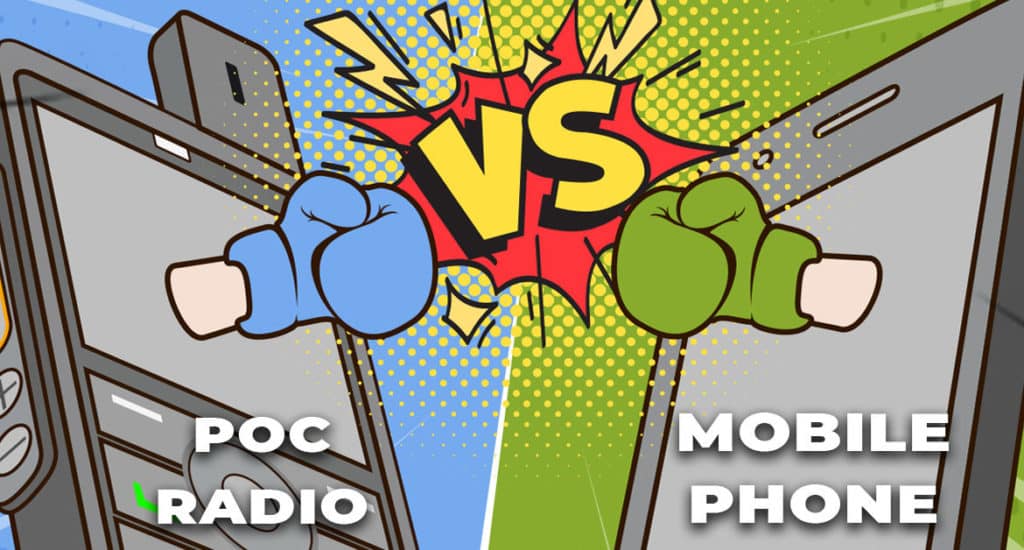Push To Talk Over Cellular (PoC) vs Mobile Phones

Push to talk over cellular radios are becoming a must have business communication device for a lot of companies worldwide. This is seen by an expected CAGR (compound annual growth) rate of 9.4% from 2020 – 2027.
Let’s delve into the differences between PoC radios and mobile phones.
Mobile Phones
Mobile phones are typically used due to everyone having them to hand as standard but there are advantages and disadvantages to using your phone devices.
One of the advantages of using mobile phones is that no licence is required. This means no extra costs on top for your communication. People understand mobile phones, and use them in their day-to-day lives making them comfortable to use.
There are a few downsides to using mobile phones. Firstly, there are no safety features. Unlike PoC and two way radios that have in-built features which will be discussed later, phones don’t offer that type of protection and security.
Mobile phones are easily breakable, there is only so much a screen protector and case can do. They’re not suitable for hazardous or busy environments. In addition, the mobile phone functions off a one-to-one communication system making it difficult to contact your team all together. Signal can be an issue even with SIM and data.
Push To Talk Over Cellular
PoC radios combining two way radios and mobile phone technology gives you the best of both communication worlds.
Push to talk over cellular is easy to set up, with little to no training required. This is because there is no complex system to figure out, saving you time and money on training. Another money-saving reason is they require no OFCOM licence unlike two way radios. If you’re using these on Wi-Fi, there are no additional costs to consider.
If you do decide a SIM card is the best option, we have two types available. A single network SIM and a multi-net SIM. A multi-net SIM means that it will connect to any network available in your area without interrupting the IP address. However, a single net SIM is more cost-effective as it only links to one network but there is a limit on the range you experience.
Comparison
Where mobile phones use a one-to-one system, poc radios use one-to-one and one-to-many systems. Instant communication makes contacting your team quicker and easier. No more waiting for the other team member to answer your call.
In addition to this, PoC radios can integrate into your current communication system, making them a multi-fleet device. Ideally, this is when a senior member of staff continues to use a mobile phone whilst the rest of the team is supplied with PoC’s. Just install the app to integrate the devices together.
Man down, lone worker, emergency button – these are all features that will find on a standard two way radio and push to talk over cellular radio. Upping the safety measure in place for each member of staff, making them feel safe and secure when working. Not to mention the push to talk function button, communication at the press of a button.
The biggest difference between PoC and mobile phones is durability. PoC devices are built with high IP rating, making them durable around dust, water, and hard surfaces. Perfect for hazardous and dangerous industries such as construction and facilities. Rugged PoC’s are available which are built to withstand any dangerous situation.
If you think poc radios can contribute and help your business, get in touch with our expert radio team on:
Email: [email protected]
Call Today: 0330 088 7008
To learn more, follow our socials to discover all about PoC radios!
